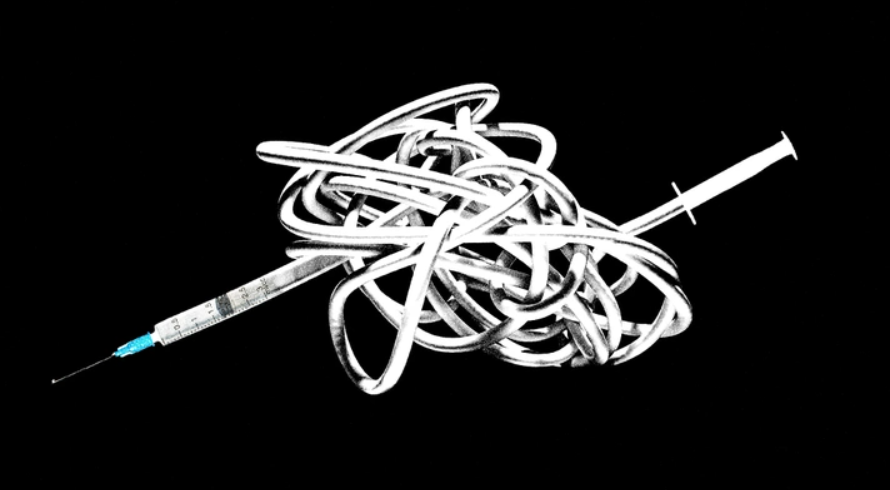Welcome to DU!
The truly grassroots left-of-center political community where regular people, not algorithms, drive the discussions and set the standards.
Join the community:
Create a free account
Support DU (and get rid of ads!):
Become a Star Member
Latest Breaking News
General Discussion
The DU Lounge
All Forums
Issue Forums
Culture Forums
Alliance Forums
Region Forums
Support Forums
Help & Search
General Discussion
Related: Editorials & Other Articles, Issue Forums, Alliance Forums, Region ForumsVaccine Chaos Is Looming
The COVID-19 vaccines furthest along in clinical trials are the fastest to make, but they are also the hardest to deploy.https://www.theatlantic.com/health/archive/2020/09/covid-19-most-complicated-vaccine-campaign-ever/616521/

On the day that a COVID-19 vaccine is approved, a vast logistics operation will need to awaken. Millions of doses must travel hundreds of miles from manufacturers to hospitals, doctor’s offices, and pharmacies, which in turn must store, track, and eventually get the vaccines to people all across the country. The Centers for Disease Control and Prevention, along with state and local health departments, coordinates this process. These agencies distributed flu vaccines during the 2009 H1N1 pandemic this way, and they manage childhood vaccines every day. But the COVID-19 vaccine will be a whole new challenge. “The COVID situation is significantly different and more complex than anything that we have had to deal with in the past,” says Kris Ehresmann, an infectious-disease director at the Minnesota Department of Health. The two leading vaccine candidates in the U.S.—one developed by Moderna, the other by a collaboration between Pfizer and the German company BioNTech—have progressed so quickly to clinical trials precisely because they are the fastest to make and manufacture.
They rely on a novel vaccine technology whose advantage is speed, but whose downside is extreme physical fragility. These vaccines have to be frozen—in Pfizer/BioNTech’s case, at an ultracold –94 degrees Fahrenheit, colder than most freezers—which will limit how and where they can be shipped. The ways these vaccines are formulated (without added preservatives) and packaged (in vials that hold doses for multiple people) also make them easier to develop and manufacture quickly but harder to administer on the ground. In other words, speed is coming at the expense of convenience. “For this first generation of vaccines, we won’t trade off safety. We don’t want to trade off effectiveness,” says Kelly Moore, the associate director of immunization education at the Immunization Action Coalition. So instead, the U.S. is planning for a vaccine that requires brutally complicated logistics. Public-health departments in states, territories, and major cities are currently drawing up vaccine plans for the end of October.
It’s still unclear whether these vaccines are safe and effective—and it’s extremely unlikely that data will be available by the end of October. But the departments are getting ready. Many are already stretched thin by the ongoing pandemic, and they are now helping plan, as Moore puts it, “the largest, most complex vaccination program ever attempted in history.” The leading vaccine candidates both deploy a new, long-promised technology. Their core is a piece of mRNA, genetic material that in this case encodes for the spike protein—the bit of the coronavirus that helps it enter human cells. The vaccine induces cells to take up the mRNA and make the spike protein and, hopefully, stimulates an immune response. By using mRNA, vaccine makers do not need to produce viral proteins or grow viruses, methods that are used in more traditional vaccines and that add time to the manufacturing process. This is why Moderna and Pfizer/BioNTech have been able to get their vaccines into clinical trials so quickly.
Moderna went from a genetic sequence of the coronavirus to the first shot in an arm in a record 63 days. To get a naked strand of mRNA inside a cell, scientists have learned to encase it in a package called a lipid nanoparticle. mRNA itself is an inherently unstable molecule, but it’s the lipid nanoparticles that are most sensitive to heat. If you get the vaccine cold enough, “there’s a temperature at which lipids and the lipid structure stop moving, essentially. And you have to be below that for it to be stable,” says Drew Weissman, who studies mRNA vaccines at the University of Pennsylvania and whose lab works with BioNTech. Keep the vaccine at too high a temperature for too long, and these lipid nanoparticles simply degrade. Moderna’s and Pfizer/BioNTech’s vaccines have to be shipped frozen at –4 degrees and –94 degrees Fahrenheit, respectively. Once thawed, Moderna’s vaccine can then last for 14 days at normal fridge temperatures; Pfizer’s, for five days.
snip
much more at the link
InfoView thread info, including edit history
TrashPut this thread in your Trash Can (My DU » Trash Can)
BookmarkAdd this thread to your Bookmarks (My DU » Bookmarks)
4 replies, 940 views
ShareGet links to this post and/or share on social media
AlertAlert this post for a rule violation
PowersThere are no powers you can use on this post
EditCannot edit other people's posts
ReplyReply to this post
EditCannot edit other people's posts
Rec (4)
ReplyReply to this post
4 replies
 = new reply since forum marked as read
Highlight:
NoneDon't highlight anything
5 newestHighlight 5 most recent replies
= new reply since forum marked as read
Highlight:
NoneDon't highlight anything
5 newestHighlight 5 most recent replies
Vaccine Chaos Is Looming (Original Post)
Celerity
Sep 2020
OP
Demsrule86
(68,552 posts)1. Not taking any vaccine when Trump is president...don't trust him.
Disaffected
(4,554 posts)3. I'll take it if
it's approved by other first world countries. If it is, Trump's recommendation is irrelevant.
Disaffected
(4,554 posts)2. Ship/store the stuff in
dry ice (solid CO2). Been done with other things for many years.
Interesting.